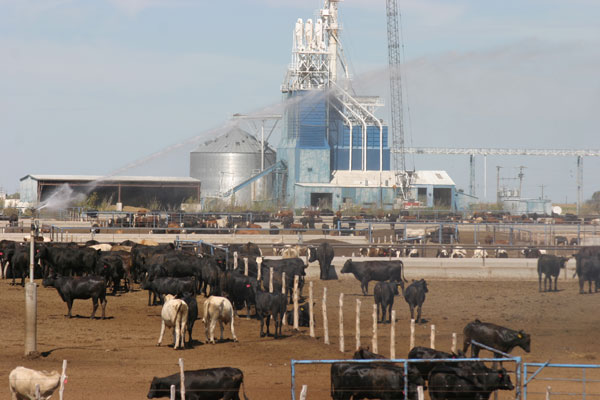According to China’s Ministry of Agriculture, over 1,300 Chinese enterprises had overseas investments in agriculture, forestry, and fisheries valued at $26 billion in 2016. Is that a threat?
May 1, 2018

According to a study released by USDA’s Economic Research Service, Chinese companies have become players in international agricultural markets over the past years. Chinese officials have ambitious strategic plans for agricultural investments to reshape patterns of agricultural trade and increase China’s influence in global markets.
While investors are chiefly motivated by profits, government authorities and banks formulate strategic plans, broker deals, arrange credit, and supply training and information services to encourage foreign investments. These investments contribute to national food security, gain a greater share of the profits for Chinese companies from imported commodities, exert influence on global price determination, impart technical and managerial expertise, open new markets for Chinese products, and project political influence abroad, according to the ERS report
According to China’s Ministry of Agriculture, over 1,300 Chinese enterprises had overseas investments in agriculture, forestry, and fisheries valued at $26 billion in 2016. The investments include crop and livestock farming, fishing, processing, farm machinery, inputs, seeds, and logistics in over 100 countries.
China’s National Bureau of Statistics reports that foreign investment in farming, forestry, and fishing grew fivefold from 2010 to 2016. Increasing reliance on food imports, concerns about national food security, and a rising stock of foreign reserves are among the factors that propelled growth in outbound investment.
Apart from the large 2013 acquisition of Smithfield Foods, relatively little Chinese investment has targeted U.S. agriculture, the report found. Statistics for 2014 show that North America received only 2% of China’s farming, forestry, and fishing investment, the smallest share of any continent.
A database that tracks Chinese investments in the United States shows only two to three investments in agriculture and food annually, most valued at less than $10 million. Statistics tracking foreign farmland holdings in the United States show 12 to 25 Chinese acquisitions annually during 2008-13.
Other nations feel the impact
Many of the investors seek to profit from growing consumer demand in China. Investments in the dairy and beef sectors in New Zealand and Australia, for example, have gained prominence as imports of animal protein increased.
However, most of China’s foreign agricultural projects involve relatively small companies investing in neighboring countries in Southeast Asia, Russia’s Far East, and Africa that have unexploited land and are often receptive to Chinese investment. Agricultural investment is now closely tied to China’s One Belt One Road initiative, a development strategy that targets countries between China and Western Europe and focuses on connectivity and cooperation between Eurasian countries.
A number of studies have found that the scale of many Chinese agricultural projects falls far short of initial announcements. Chinese researchers have found that few projects were profitable and relatively few investors exported products back to China as planned.
The researchers attributed poor results to factors such as inexperience in global markets, lack of language skills, local bureaucracy, corruption, and political instability.
The report’s extensive review shows that Chinese foreign investment strategies are shifting away from land purchases toward mergers and acquisitions. For example, COFCO—a state-owned agribusiness—embodies new tactics aimed at gaining more control over commodity trading, processing, and logistics. Bright Foods— another state-owned company— exemplifies the conglomerate approach of assembling various companies and brands under one umbrella.
The WH Group—a privately owned company in China’s fragmented pork industry—acquired Smithfield Foods, the world’s largest pork processor, known for its swine-breeding and pork-processing capabilities. New Hope Group—China’s largest animal feed company—has diversified its investments from feed mills in neighboring countries to joint ventures with Australian and New Zealand partners to meet growing demand for animal protein in China.
Chinese investments in countries other than the United States could influence the U.S. share of the Chinese market for certain commodities like dairy products and beef. However, the United States’ abundant endowment of productive farmland, leadership in agricultural technology, efficient management and marketing, and skilled and experienced managers are all advantages that may help it retain its role as China’s leading supplier of agricultural imports, regardless of where Chinese companies choose to invest.
Gooch and Gale are economists with USDA’s Economic Research Service
You May Also Like



